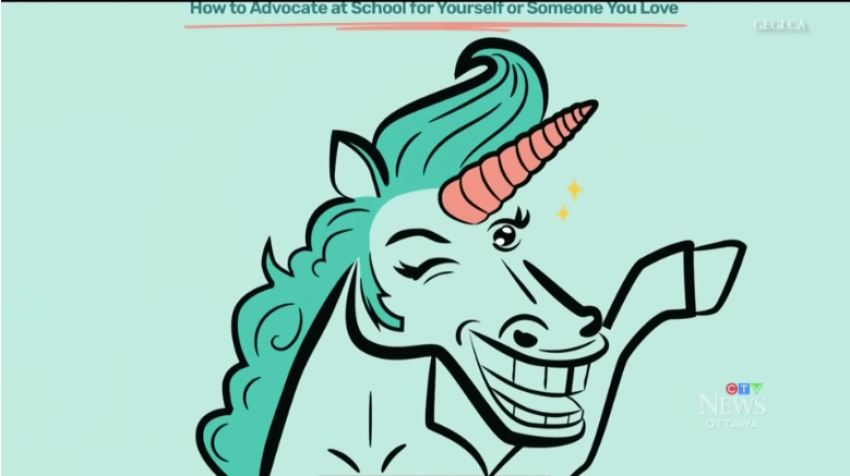Nonbinary 'Gegi' unicorn teaches kids to be trans activists, identify as gender fluid

A “nonbinary” cartoon unicorn whose name is a slang term for vagina is being used to train Canadian children to be trans activists.
Named “Gegi,” the unicorn is a new virtual resource that teaches students about the rights at schools in Ontario, the most populous Canadian province. The mythical creature was created by two Ontario academics: Lee Airton, a professor of gender and sexuality studies in education at Queen’s College in Kingston, and Kyle Kirkup, a professor at the Faculty of Law at the University of Ottawa, according to CTV-Ottawa.
“Gegi brings together publicly available information like school board policies, definitions of grounds of human rights protection and translates them so that anyone can find them and understand them,” Airton said in an interview with CTV.
The unicorn's name is an acronym for “gender expression” and “gender identity,” and, as CTV noted, the fictional character is “nonbinary,” meaning that it doesn't identify as either male or female, which the schools claim is how many students also identify themselves.
Ironically, the word gegi, according to Urban Dictionary, is a derogatory slang term that refers to female private anatomy.
The Gegi website, which targets children, contains a variety of recommendations about bathroom use, including scrapping all signs designating public facilities as accommodating either boys or girls in favor of an “all-gender washroom” symbol. Although sex-segregated spaces have been the norm for many years, as facilities are designed differently to meet each gender's personal needs, it might now be considered a form of “gender identity” discrimination.
Another lesson being taught to children on the Gegi website is that no one is supposed to ask a trans-identifying person of any age to use a restroom designated for their sex. Instead, they're to be allowed to use the restroom that aligns with their chosen gender identity. Asking them to do otherwise would constitute a form of discrimination. Should a student object to the mixed-sex restrooms, the student who does not identify as transgender is to be ordered to seek accommodations elsewhere, the website advises.
These same standards also pervade the realm of athletics and field trips.
In 2016, “gender identity” was added as a protected category in the Canadian Human Rights Charter and in the criminal code as part of Bill C-16.
The Daily Wire's Georgia Howe noted the similarities in how cartoons are being used to teach gender identity ideology to children.
“Like the genderbread person of yesteryear, the gender unicorn is extraordinarily popular with corporate diversity trainings and, increasingly, in early childhood education. However, despite prolific evidence of early childhood gender lessons posted to social media, most schools are less than forthright about their use of these tools, often omitting them from their official curriculum, only to be discovered by diligent parents,” Howe wrote.
The Canadian gender unicorn is but the latest use of cartoons aimed at young people with the goal of instructing them in gender ideology. An infamous pamphlet from Trans Student Educational Resources shows a purple unicorn with two hearts indicating physical and emotional attractions; a rainbow emanating in a thought bubble indicating “gender identity;” a dotted green line spanning the unicorn’s presentation indicating “gender expression;” and a double helix of DNA image positioned in the mythical animal’s crotch area to indicate sex, thus creating the idea of a biological gender identity apart from sex.
Send news tips to: brandon.showalter@christianpost.com Listen to Brandon Showalter's Life in the Kingdom podcast at The Christian Post and edifi app Follow Brandon Showalter on Facebook: BrandonMarkShowalter Follow on Twitter: @BrandonMShow



























